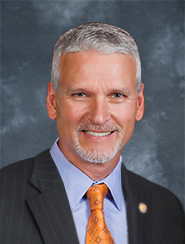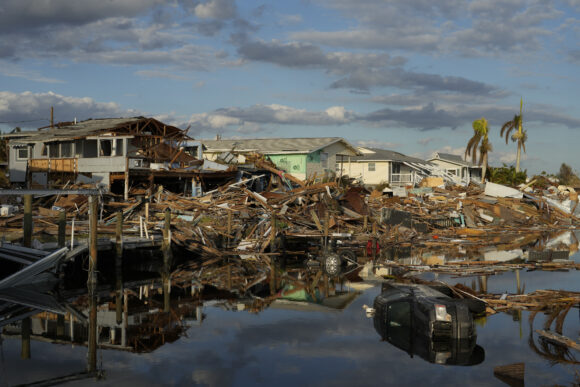One of the last property insurance-related bills to come out of the 2023 regular session of the Florida Legislature was signed into law this week, potentially saving insurers some cash, giving them some flexibility on rate requests, and raising hurricane deductibles for some homeowners.
Senate Bill 418, sponsored by Sen. Keith Perry, R-Gainesville, and others, will address a wide range of insurance issues when it takes effect July 1. Most notably, the law:

Perry Allows insurers to offer higher hurricane deductibles on some residential policies. Current Florida law requires insurance carriers to offer deductibles of $500, 2%, 5% or 10%. The $500 deductible is no longer required to be offered for policies that cover between $250,000 and $1 million. For homes with $1 million to $3 million in coverage, the deductible can now be set at 3%. And for policies above that, insurers do not need to offer the 2% deductible at all but can go with 5% or 10%.
- Lets insureds waive windstorm coverage or contents coverage with a typed form. Current law requires a handwritten form.
- Provides that insurers, when filing rate increases, may use an average of two or more computer models approved by the Florida Commission on Hurricane Loss Projection Methodology. Until now, carriers had to choose one of three models. That had led to some complaints, with some in the industry concerned that one model alone did not provide an accurate projection and could skew rate requests. The current models can differ by as much as 50% in loss projections, said Hugh Willoughby, a member of the commission and a meteorologist and professor at Florida International University. The current law may have limited insurers to one so that they weren’t model-shopping to support higher rates, he said, adding that the use of more projections is a good thing for insurers and insureds and should encourage the development of even more forecasting simulations. Forecasting is important for estimating rates in Florida, insurers have said. Some states allow rates to be based only on previous years’ losses, not future projections, part of the reason some insurers are now pulling back on new business in California, said Michael Wara, of the Woods Institute for the Environment, who spoke to the PBS Newshour this week.

Willoughby Allows rate filings to include more premium discounts for residential property if a home is built to windstorm mitigation construction standards developed by independent scientific research organizations.
- Loosens the requirement that insurers give 15-day notice when raising premiums for policyholders who pay premiums through automatic bank drafts. With the new law, the insurer will be required to give a 10-day notice only when the premium goes up by $10 or more.
- Provides that motor vehicle service agreement companies, or auto warranty firms, can go without unearned premium reserves if they maintain liability insurance and agree to pay 100% of claims as they occur.
The full text of the bill is here and a legislative analysis can be seen here.
The legislative session ended in May but the bill was not formally presented to the governor until June 5. Gov. Ron DeSantis had seven days to sign or veto the measure.
The Legislature this year adopted other major insurance legislation, most notably the tort-reform bill, HB 837, that extends limits on assignments of benefits and attorney fees to most insurance claims disputes and personal injury cases. Lawmakers also adopted a windshield-repair bill that bars AOBs and forbids repair shops from offering gifts to consumers.
Top photo: Debris in Fort Myers Beach, Florida, one week after Hurricane Ian. (AP Photo/Rebecca Blackwell, File)
Was this article valuable?
Here are more articles you may enjoy.



 CRC Group Signs Agreement to Acquire Euclid Transactional
CRC Group Signs Agreement to Acquire Euclid Transactional  Private Equity Firms Expected to Unleash Middle-Market M&A Deals, Survey Says
Private Equity Firms Expected to Unleash Middle-Market M&A Deals, Survey Says  10 Highest Class-Action Settlements in 2025 Eclipsed $70B Total: Duane Morris
10 Highest Class-Action Settlements in 2025 Eclipsed $70B Total: Duane Morris  Law Firm Faces Sanctions for Failing to Vet Ugandan Claims in $6B 3M Case
Law Firm Faces Sanctions for Failing to Vet Ugandan Claims in $6B 3M Case 

